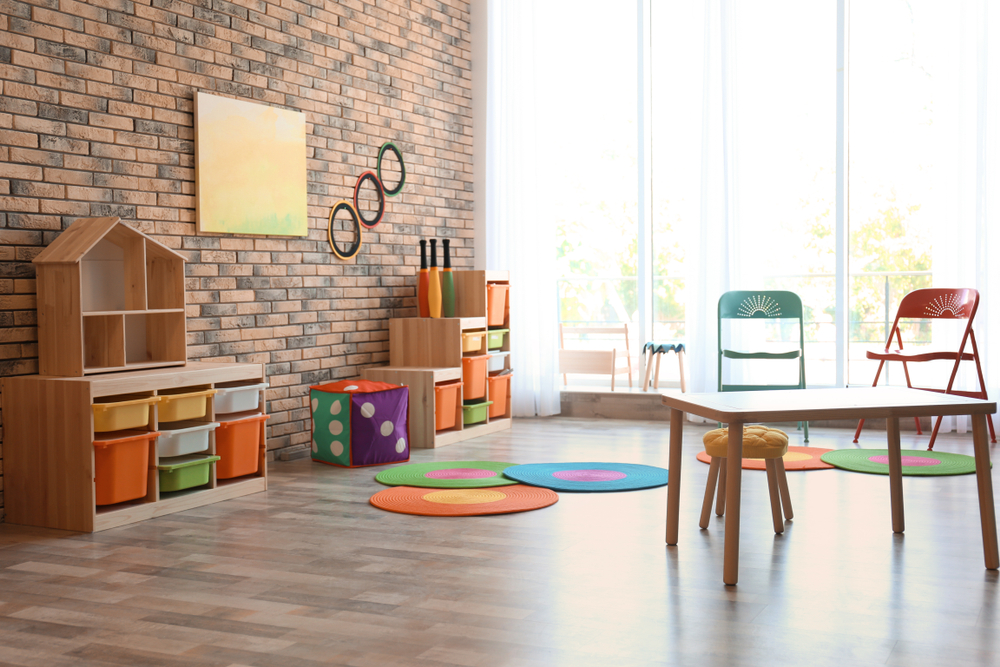Choosing care for your child when returning to paid work can be challenging, and to the uninitiated the terms can be confusing. One alternative to long day care in a larger child care centre is known as family day care.

Family day care is where a child is educated in a small group in a family style atmosphere at an educator’s home, seeing the same educator or educators each day.
The ratio in family day care is one educator for a maximum of seven children, and there can be no more than four children who are preschool age or under (per educator). The educator’s children must be counted in those seven children if they are under 13 years and not being cared for by another adult at the premises.
All family day care educators must hold or be “actively working towards” at least an approved certificate III level education and care qualification. (In South Australia, though, a family day care educator must hold at least an approved certificate III level education and care qualification.)
All family day care educators must hold an approved first aid qualification and have undertaken approved training in anaphylaxis management and emergency asthma management.
The approved provider of a family day care service must read — or ensure a nominated supervisor or a person in day-to-day charge of the service has read — a person’s working with children check before the person is engaged or registered as a family day care educator as part of the service. You can see which check applies in your state or territory here.
There’s a clear focus on learning and development based on the principles, practices and learning outcomes of the Early Years Learning Framework. The educator will plan an educational program for each child, share it with families and invite family input.
What’s the difference between family day care and long day care in a child care centre?
The most obvious difference is size.
Child care centres are usually much bigger and busier, with children usually grouped according to age. There are various educator-to-child ratios for each age group and it may be different depending on your state (as you can see here).
Like family day care, child care centre staff are required to have a qualification in early childhood education and care. The qualifications required will depend on their roles and responsibilities.
Routines at long day care centres are usually tailored to the needs of each child, especially for very young children, but may move to routines that are more based around a group dynamic as the child gets older (for example, having lunch time at the same time).
How to choose a family day care provider that’s right for you
If you’re interested in family day care, start by finding out which registered providers are near you. Then, you can organise a visit to the educator’s home.
When judging the quality of the care and educational program, it helps to ask yourself:
- is the care child-focused, or time-focused? (For example, are nap times tailored to each child or grouped at the same time of day?)
- how many children does the educator have each day and what are their ages?
- what learning experiences are available for the children each day and will this suit my child?
- do the children attend a playgroup during the week? For some parents, this represents bonus social interaction opportunities but for others it’s not a priority
- are meals provided and if so, how is the menu determined?
- how does the educator manage supervision of children indoors and outdoors?
- are there other people in the home when family day care is provided and how do you feel about that?
- what ratings did the family day care service achieve under the National Quality Standards (more on that in a minute)?
- does the cost suit your budget?
Family day care services are part-funded by the Australian government, and the costs vary across services and family income.
How the regulator judges quality
Family day care services and long day care services are assessed for quality of education and care under the Australian Children’s Education and Care Quality Authority’s National Quality Standard.
Seven quality areas are assessed and rated to determine a quality rating, including the educational program, childrens’ health and safety, the physical environment, staffing, relationships with children and families, governance and leadership.
State and territory regulatory authorities assess and rate family day care services as either “exceeding”, “meeting”, “working towards”, or “significant improvement required” using the National Quality Standard, also known as the NQS.
Here’s how family day care compared with child care centre-based care, according to the regulator’s data as at March 31, 2020:
However, there is great variation across and within each service and centre. Finding out as much as you can about each provider on your shortlist can help inform your decision.
Many families prefer the home-like family environment of family day care for their children, especially when they are young, and then move their children onto long day care when the child is old enough to want friends.
It can be a trade-off between a small intimate family-like atmosphere for a more active, stimulating environment with many more people.
Author
Senior Lecturer, School of Education, Southern Cross University
This article is republished from The Conversation under a Creative Commons license. Read the original article here.









